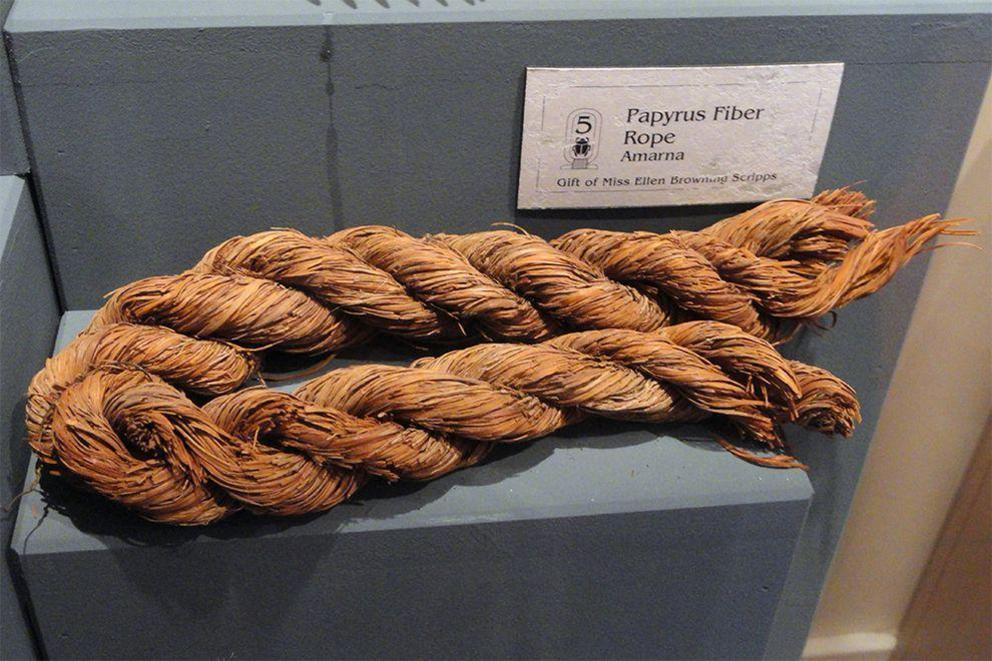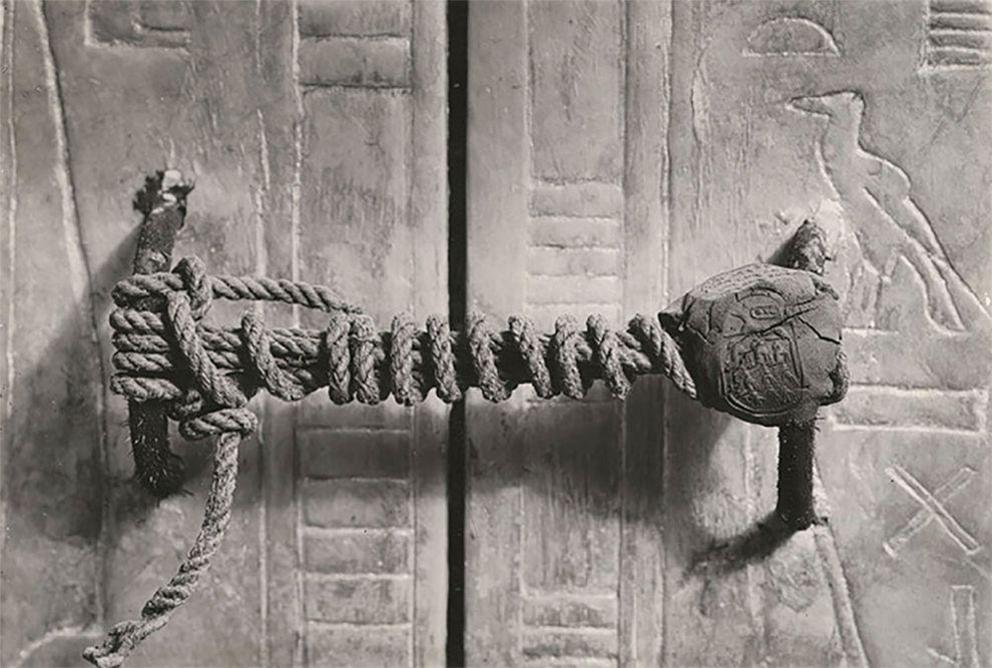This is the remarkable 3,245-year-old rope that sealed King Tut's tomb
The seal protecting the fifth shrine of the burial chamber of the young pharaoh Tutankhamun.
It guarded the royal sarcophagus and survived 32 centuries before being cut in 1923.
More than 3,000 years ago, deep below the surface of the Valley of the Kings, someone sealed one of a series of nested shrines protecting the final resting place of the young pharoah Tutankhamun with an intricate combination of knots and clay. There it remained, fully intact for more than 32 centuries, until until Feb. 16, 1923, when famed archaeologist Howard Carter breached the seal and explored the riches of the inner burial shrines for the first time.
It was arguably one of the greatest archaeological discoveries of the 20th century, but beyond all the gold and historical riches, it's worth asking: How in the world did rope from ancient Egypt manage to survive until 1923?
Like other organic materials found within tombs in the Valley of the Kings, including items such as honey, bread and beer residue, the rope binding the fifth shrine door to Tut's final rest place benefited from the extremely arid environment of the desert region and the low-oxygen level of the sealed tomb.
"Tombs are sealed to the outside," explains the site Rare Historical Photos. "Bacteria can break things down as long as they have oxygen, but then they effectively suffocate. It's not uncommon to find rope, wooden carvings, cloth, organic dyes, etc. in Egyptian pyramids and tombs that wouldn't have survived elsewhere in the world."
 An example of papyrus fiber cordage dating back to ancient Egypt.
An example of papyrus fiber cordage dating back to ancient Egypt.
While we can't say for sure what the rope was made from, we know that a vast majority of rope-making in ancient Egypt was sourced from the stem of the papyrus plant. Susceptible to decay in humid regions, papyrus exhibits exceptional longevity in arid conditions thanks to its composition of highly rot-resistant cellulose. In 2004, an archaeology team from Boston University uncovered over two dozen coils of thick papyrus sailing ropes hidden in the back of a cave in Egypt.
"It was a scene frozen in time," archaeologist Kathryn Bard told Hakai Magazine. "They hadn’t been disturbed for close to 4,000 years."
As for the knot that tied the two copper handles together on Tut's fifth shrine door, one Reddit commentator seems to have deciphered how it worked:
It looks like they started with something like a cow hitch on the left handle, with equal free ends, then the rope wraps around both handles (left and right) several times and then was finished with the spiral wrap and half hitches near the ends. Even though it would be easy to undo the half hitches and the spiral wrap, one would not be able to undo the rope between the handles without breaking the seal.
Sadly, out of the thousands of items catalogued and removed from the tomb, it's unknown if these remarkable seals survived after being breached. As one Egyptologist commented, only one-tenth of the items found within the tomb have ever been properly studied.
"The famous death mask has never even been properly studied," they added. "So if you ever hear that someone studies ancient Egypt, please don't ask them if there's anything left to do."

